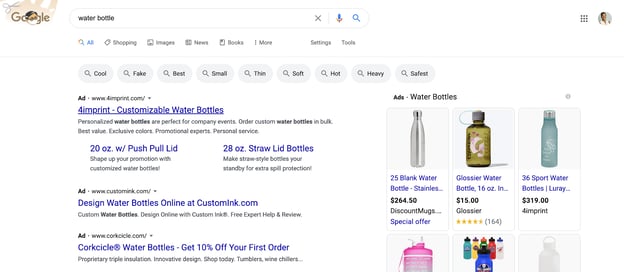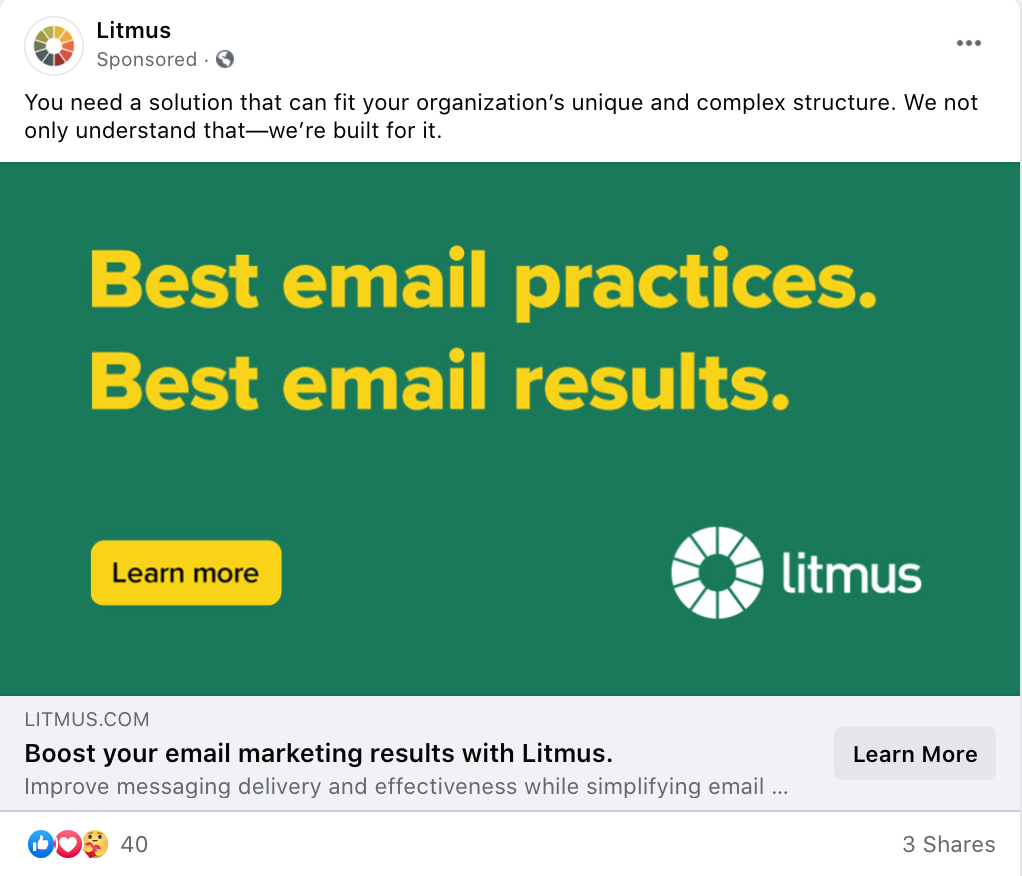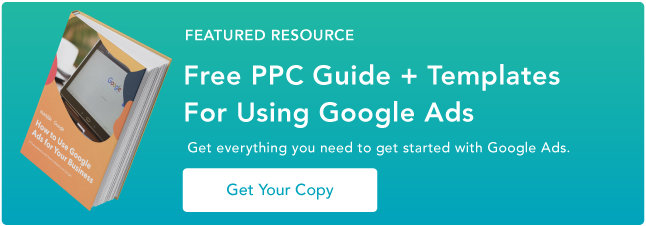[ad_1]
If you’re reading this article, it’s likely because you’re considering running digital ads.
You’ve heard about Facebook Ads and Google Ads but you’re still unclear on the difference between the two platforms.
In this article, we’ll cover each platform’s unique features, the key differences to keep in mind, and the factors to consider when deciding which ad platform to use.
Let’s get started.
What is the difference between Facebook Ads and Google Ads?
Facebook Ads is an advertising platform used for paid social campaigns on Facebook while Google Ads run search and display ads. While they both run pay-per-click (PPC) ads, they do so on separate channels and often target users at different stages in the buyer’s journey.
These platforms are often pitted against each other but in fact, Facebook Ads and Google Ads are complementary, each offering unique benefits to marketers.
If your team can only focus on one, there are a few things you’ll want to consider.
Your Campaign Goal
What do you want to accomplish with your campaign? Is it brand awareness, leads, sales, or something else? Knowing this answer can already steer you in the right direction.
Google Ads is ideal for demand capture – meaning reaching users who have high purchase intent. For instance, if I’m looking up the keyword “water bottle,” this may signal an interest in purchasing one.
With that in mind, the ads below align well with search intent and can lead to sales.

Facebook Ads, on the other hand, is ideal for reaching consumers who are near the top of the funnel, (i.e., great for brand and product awareness). 
So, you could use both platforms at the same time to target users at every stage of the journey. But if that doesn’t align with your broader objectives, knowing the main goal of your campaign will help you determine which platform is better suited to achieve it.
Your Budget
With any ad campaign, your goal is to maximize your return on ad spend (ROAS). It’s easier to do that on some platforms than others.
With Google Ads, you’ll have to look at keyword competition and keyword price. If the keywords you’re targeting have high cost-per-click (CPC) and you have a small budget, it may not be the best place for you to invest your money.
For instance, let’s say you have a $100 daily budget. You want to rank for “hardware store” in your local area but the cost for that keyword is $20. This means that you’d get a maximum five clicks per day – pretty limiting.
With that same $100 budget, you could potentially reach more people on Facebook Ads and conduct experiments to learn more about which strategies work for your target audience.
It’s all about finding where your dollar will go the furthest in relation to your goals. Tools like HubSpot’s ads software can help you measure your campaign’s ROI and allow you to make adjustments to optimize its performance.
Stages in the Buyer’s Journey
As mentioned above, certain platforms align better with certain stages in the buyer’s journey.
With Facebook being a social media platform, most users are not actively looking to purchase products. However, they do explore and share their interests on the platform. With that in mind, it’s a great place for users to discover your brand, especially if you don’t think it relates to a topic users will be searching.
In contrast, it’s estimated that Google receives over 5 billion searches every single day. These searches can fall anywhere on the buyer’s journey stage, but certain keywords indicate a high purchase intent.
For example, if I search “best water bottle” or “water bottle price,” this suggests that I am interested in purchasing this item. With this approach, marketers can reach users they know are near the bottom of the funnel.
Historical and/or Competitor Data
As you develop your playbook for your next campaign, it will be helpful to look at historical data to inform your strategy. Knowing what has worked in the past, what hasn’t and what is left to explore can serve as a reference and benchmark.
If you’ve never run a campaign before, look at your competitors. What ads are they running? Where are they running them? What do their creative assets look like? What’s their messaging?
This competitive intel may highlight some areas for opportunity and give you insight into the strategies your competitors are using.
Benefits of Facebook Ads
In a 2019 HubSpot State of Marketing Report, marketers revealed that the paid channel offering the highest ROI was Facebook. Let’s dive into some of the reasons why.
For starters, Facebook is the number one social media platform with over 2.7 billion monthly active users, according to a 2021 Statista report. In addition to its large audience base, the platform offers granular targeting capabilities, allowing marketers to reach users based on demographics, behaviors, life events and interests.
Before launching a campaign on the platform, you can create a “lookalike audience,” which is essentially your user persona. Facebook Ads will then show your ads to audiences who match your description.
That’s one advantage the platform has over Google Ads – it’s much more detailed in who you’re able to target for your ads.
Beyond that, you may also be able to reach more users and get a better clickthrough rate (CTR) through Facebook Ads. Smart Insights reported found that in Q1 of 2020, the median CTR for a Facebook ad on the newsfeed was 1.11% – compared to .47% for Google Display ads in the same time period.
Benefits of Google Ads
In 2019, Google estimated that for every dollar a business spends on ads, it earns $8 in profit. Let’s see why that may be and how the platform can be useful for brands.
Google Ads, formerly known as Google Adwords, initially offered only very simple text-based ads on the search engine. Now, it’s evolved to include features that can drastically improve clickthrough rates, such as reviews, detailed contact information, a shopping function, and mobile optimization.
In Q1 of 2020, Smart Insights found that Google search ads had the highest CTR at 1.55% when compared to display ads and Facebook ads. This is likely because Google prioritizes ads based on relevance.
While you do have to bid on keywords, the highest bid doesn’t necessarily always win. Your bid gets your foot in the door, your ad’s relevance to the keyword the user’s search intent gets you in the house.
Remarketing, which is reconnecting with users who have interacted with your brand before, is now much easier using Google Ads. So, let’s say someone visited your site and added something to their shopping cart but didn’t complete their purchase. You can now re-engage users as they search on Google, watch a YouTube video or navigate a site within Google’s Display Network.
In addition, the platform’s simple interface and advanced features like search term report, ads editor and auction insights make it easy to build, launch and track campaigns.
With Facebook Ads and Google Ads, one isn’t inherently better than the other. Once you account for your goals, budget and target audience, you will find that each one offers unique features that can be useful to your brand at various points in its growth.
[ad_2]
Source link



